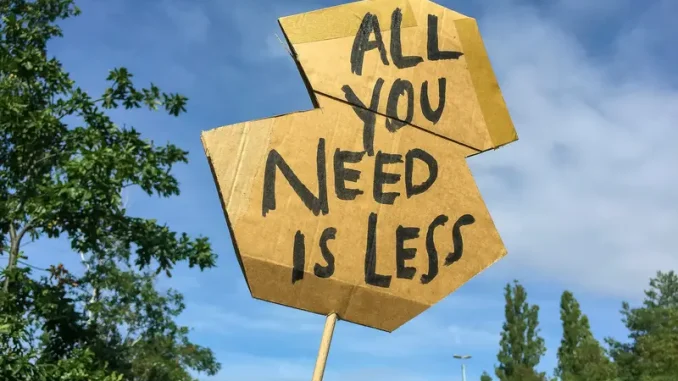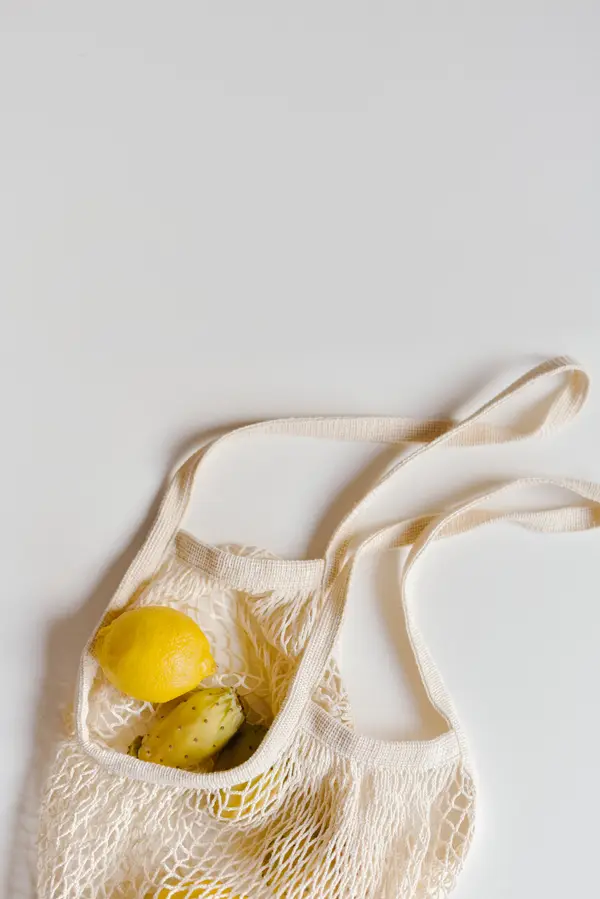
Can you take baby steps to zero waste living and still have a genuinely positive impact on the planet? Or is it necessary to change your life completely and fit a year’s trash into a jar-sized container to live sustainably?
It’s an admirable goal to reach the end of every week without a scrap of waste going to the landfill. However, it’s possible to miss the forest for the trees when pursuing such a lofty goal.
Living a sustainable, zero waste, earth-friendly lifestyle takes profound change, and the process tends to feel overwhelming at the start. Don’t panic! Making incremental changes in your personal life is a worthwhile and beneficial start.
Imagine if everyone made just a few minor changes and how those changes would add up across the planet. Consider starting with the following easy baby steps to zero waste.
Recycle and Buy Recycled Products, Too
When adopting a zero-waste lifestyle, we often concentrate on trying to recycle everything possible. That is good because recycling your waste has a significant environmental benefit, despite some of the negative aspects of recycling. Consider these little nuggets of wisdom about recycling from the EPA:
- The EPA estimates that recycling paper resulted in emission reductions equivalent to taking 33 million cars off the road for an entire year!
- The EPA estimates that recycling plastics removed the equivalent of almost 1 million cars in 2018.
- Recycling one ton of paper saves enough energy to power the average home for six months and 7,000 gallons of water (that would fill up my 50 gallon rain barrel every day for around five months!)
But how often do we focus on buying recycled items?
If you look at the packages of many modern products, you’ll see percentages indicating how much of the packaging came from recycled materials. Hopefully, it says 100 percent.
However, it’s helpful to look at the actual products, too, for recycled content. Did you know that some shoe companies use recycled plastic to create their footwear?
It’s best to avoid needless buying but try to seek out recycled materials whenever you shop. We have other posts highlighting companies that use recycled materials to make their products, products made from recycled paper, rugs made of recycled plastic, even sunglasses made from recycled material.
Living the Compostable Product Lifestyle
A compostable product breaks down into non-toxic components when given a warm, moist environment to biodegrade. Many alternatives exist for everyday products which you can toss in your compost bin when done with them.
Start in your bathroom, where you might find that most of your toiletries contain some type of plastic – either with the packaging or within the actual products. Plastic floss, plastic toothpaste, and plastic inside your shampoo. Avoiding plastic with all of these items is easy.
Companies make compostable bathroom products for every facet of your morning toilette, from toilet paper to toothpaste. You can even compost the hair you shave off your body.
Don’t stop there though, you can find compostable sponges, phone cases, and you can probably compost more waste from your household than you think. We covered lots of surprising things you can compost in our post with essential and weird facts about composting. Can you compost hair? Yes. Feathers from old pillows? Yes. Dried blood? Ewww, but yes.
Don’t Forget to Compost Your Compostable Products
Buying compostable items is just the first step. The next is making it easy to compost at your home. Some municipalities offer composting services where you can toss your compostable items into the green bin.
If you’re unsure where to start your composting journey, try a “how-to” composting book, like the one we highlighted in our list of eco-friendly gifts under $10 or read our post about speeding up compost, it covers the basics of how to ensure your compost pile is healthy and filled with billions of happy and hungry microscopic living beings.
You will need to get yourself a compost container, choosing a compost bin vs tumbler is the first step, we have you covered in our review of compost bins vs tumblers. Many of these are made from recycled plastic too, so you score an environmental two’fer, hooray!
Once you’ve done a little legwork on how to compost, take a quick inventory of the compostable products you use each day.
Did you know many paper towels are compostable? If you can’t use a towel to clean up a mess and must use a paper towel, make sure it ends up in your compost bin.
Once you start composting, you will be hooked. And over time you will notice your weekly haul of the kitchen trash bag to the garbage can is getting easier and easier as more of your trash is diverted to the compost pile.
Eliminate Your Everyday Single-Use Plastics

You’ve probably heard the phrase “single-use plastics” used in conjunction with news stories suggesting that the oceans will have more plastic than fish by 2050. While that statistic remains debatable, one that does not is the fact that eight million pieces of plastic enter the ocean every day.
According to figures shared by National Geographic, single-use plastics, or convenience plastics, as they’re sometimes called, make up 40 percent of the plastic produced each year.
What does this mean for the average family and their plastic waste? Well, if you eliminate most or all of the single-use plastics from your life, you might reduce your plastic waste by 40 percent. One great way to approach single-use plastics is by changing where and how you buy your food.
- Toss some canvas bags in your car or this super-packable bag from Chicobag in your backpack or purse. Use them to bag up your groceries rather than getting the single-use plastic bags from the cashier. Avoid those thick “reusable” plastic bags, too.
- Avoid take-out food and unnecessary plastic containers by cooking at home or eating at the establishment. Many restaurants still use Styrofoam containers despite many cities banning them.
- Get a pair of reusable utensils, like this pair of compact plastic utensils and skip the disposable plastic ones. We have reused this set dozens and dozens of times over the years, cutting out probably hundreds of single use plastic utensils. Sometimes the long life of plastic can be used for good!
- Buy yourself some refillable beverage containers for coffee and water to avoid plastic waste when getting your caffeine fix or quenching your thirst. As we detailed in our screed about the environmental harms of plastic bottles, using a refillable aluminum bottle reduces your emissions by 80%.
- Cut out the little plastic berry containers at the grocery store and use cardboard containers offered at farmers’ markets. Those little containers aren’t recyclable, and they end up in landfills.
Buy Used Items, Especially Clothing
Apps like OfferUp, Poshmark, and ThredUp feature thousands and thousands of used clothing listings at incredibly affordable prices. Not only do these websites help you save money, but much of the clothing still has tags on it or was only used a few times.
The environmental impact of textile waste is enormous because of the emphasis from manufacturers that we should buy new clothing every season. Heaven forbid anyone wears last season’s sweater. Not only is fast fashion filled with microplastics, but most of it ends up in landfills.
Try to extend the lifespan of your clothing, too. Don’t toss something in the trash because it has a hole. Most dry-cleaning businesses have a tailor on staff who can repair the hole for just a few dollars.
One of the best baby steps to zero waste is avoiding buying anything in the first place. Get it fixed, repaired, or mended first!
Focus on Change Outside Your Household

Transitioning to a zero-waste lifestyle is a rewarding process that helps your family live an ecologically responsible life. However, it’s not just what happens inside your home that’s important.
Consumption is just one part of the waste cycle. Production is another.
We have a problem with single-use plastics because that’s what companies give us when we visit the grocery store, buy a product, or shop.
Meaningful change means stopping those companies from employing single-use plastics even before they reach our doorsteps.
Don’t just show up to your local grocery store with your canvas bags displayed proudly on your arm. Before you shop, try to contact the store to voice your opinion about how they have single-use plastic bags hanging up at every checkout stand.
Learn how to compost your newspapers and junk mail, but call or contact those companies, too. Get off those mailing lists and stop the waste before it’s even printed.
Take a look at the efforts of your local politicians. Are there any plastic bans stalled in your state’s legislative body because of industry pushback? Let your legislator know you’re on the side of the planet, not the petrochemical companies.
You can start virtually anywhere with baby steps to zero waste. Our lives are so incredibly filled with plastic and single-use items that end up in landfills that you can look in virtually any room and find ways to change your behavior. Day by day, we can all work together to preserve the health of our families and the planet. Start small, and you’ll eventually have a big impact.
Here at R&R we only endorse products we have owned, tested, and fell in love with. If you end up making a purchase through one of our affiliate links, we may earn a very small commission that offsets a portion of the cost of hosting, building, and maintaining this site.